By Susanne von Rosenberg, UC Master Gardener of Napa County
One thing that Master Gardeners talk about a lot is putting the right plant in the right place. That means choosing plants adapted to the climate, to the soil in your garden and to the amount of sunlight and water they will receive.
One other consideration is whether the plants you're considering are invasive. Invasive plants threaten our wildlands, outcompete native plants and change the habitat so it is no longer suitable for some native species.
As a result, invasive plants pose a substantial threat to endangered species. Invasive plants can also threaten agricultural lands by crowding out crops and rangeland forage. Some are toxic to livestock or wildlife.
According to the California Invasive Plant Council, invasive weeds in pastures and farmland cost an estimated $33 billion per year nationwide. California alone spends an average of $82 million per year to deal with invasive plants.
Even in the suburbs, invasive plants can cause problems. Pampas grass and Scotch broom increase fire fuel loads; other invasive plants can clog creeks and increase the risk of floods. Still others consume large amounts of water that would otherwise have gone to other plants, waterways or drinking water.
Until I became a Master Gardener, it never occurred to me that garden centers and nurseries might sell problematic plants. Unfortunately, many of the plants causing problems in California were introduced through the horticultural trade. We need to educate ourselves to make sure that we don't plant a future problem.
I've been surprised how often a plant that seems otherwise ideal for my garden turns out to be potentially invasive. Gardening catalogs are another source of invasive plants. Some of these plants may be perfectly harmless in other parts of the country but invasive here.
How can you know if a plant you're considering might be invasive? First, you can check the Calflora website, which provides information on a large number of plants grown in California, including whether a given plant is considered invasive or has invasive potential.
You can also consult the California Invasive Plant Council website, which has an alphabetic list of problematic plants. That list includes plants commonly sold through the horticultural trade and assigns a rating of high, medium or low risk of invasiveness. In addition, IPC maintains a watch list of plants that aren't currently invasive in California but risk becoming so.
As you evaluate a plant for invasive potential, consider these questions:
Is the plant known to be invasive in other locations with a Mediterranean climate?
How readily does the plant reproduce? On average, how many seeds does it produce each year, and how easily does it germinate from seed? How long will it take until the plant is mature enough to set seed?
Does the plant spread vegetatively, such as via underground running stems (like running bamboo)? Can a new plant sprout from small pieces of root, like bindweed does?
How tough is the plant? Does it need regular water or special growing conditions to germinate?
Could the plant hybridize with existing plants?
Are other species of the same genus, or a related genus, invasive in a similar climate?
Would the plant increase the risk of fire? Is it highly flammable or does it soak up a lot of water and leave surrounding vegetation dry?
How easily can animals, wind or water spread the plant's seeds or vegetative matter?
How hard is the plant to remove or control?
Unfortunately, many of the qualities that make a plant desirable may also predispose it to being invasive. If it is adapted to our climate, easy to grow and requires little water, it meets some of the criteria of a potentially invasive plant.
Compared to well-behaved plants, invasives reproduce more readily, crowd out desirable plants and may be difficult to remove. So if a plant's description says that it “reseeds readily” or “spreads easily,” think twice. If it “grows rapidly” or is “adapted to adverse growing conditions,” do some follow-up research.
Unless you know the plant, it it's a good idea to spend a few minutes online to reassure yourself that the plant is well mannered. Don't rely on old information. Some plants have been designated invasive only recently, and new plants are added to the list regularly.
Food Growing Forum: Napa CountyMaster Gardeners will present a discussion of “Cane Berries” on Sunday, November 14, from 3 p.m. to 4 p.m., via Zoom. Register here to receive the Zoom link.
Got Garden Questions? Contact our Help Desk. The team is working remotely so please submit your questions through our diagnosis form, sending any photos to mastergardeners@countyofnapa.org or leave a detailed message at 707- 253-4143. A Master Gardener will get back to you by phone or email. For more information visit http://napamg.ucanr.edu or find us on Facebook or Instagram, UC Master Gardeners of Napa County.
Attached Images:
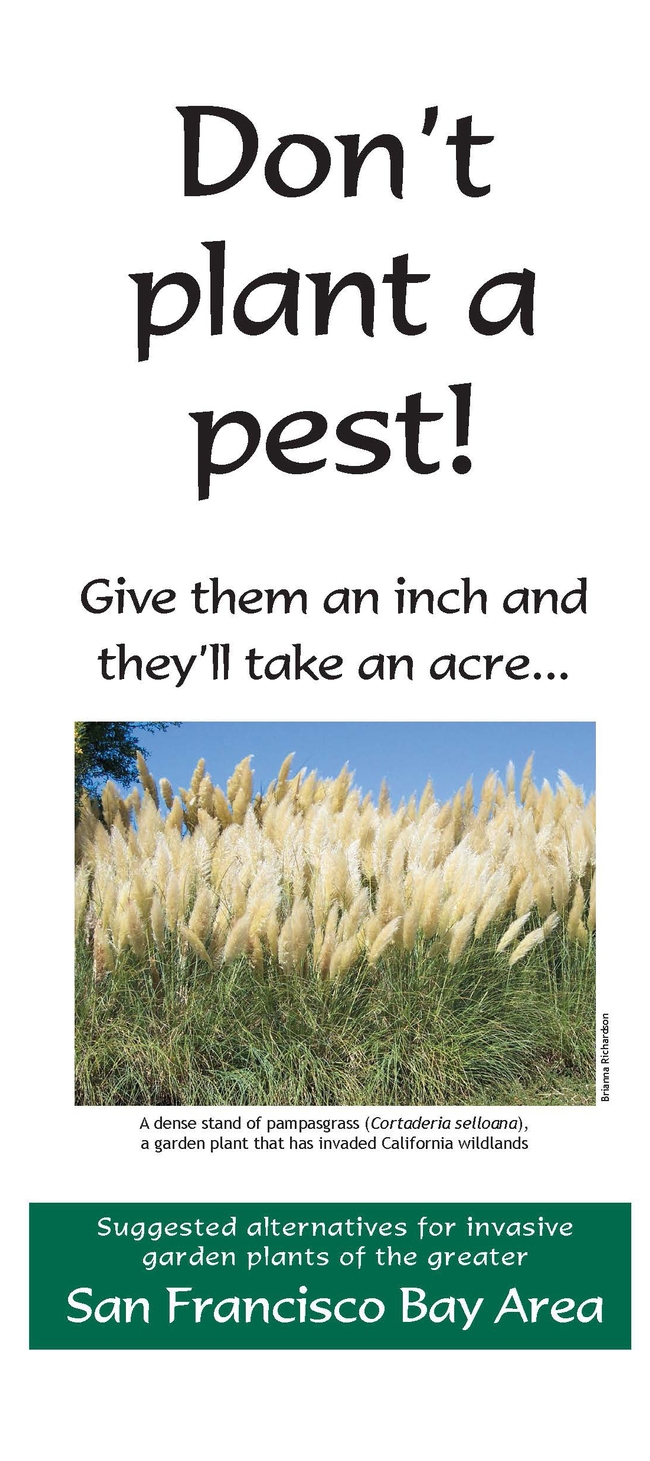
Don't plant a pest! (cal-ipc.org)
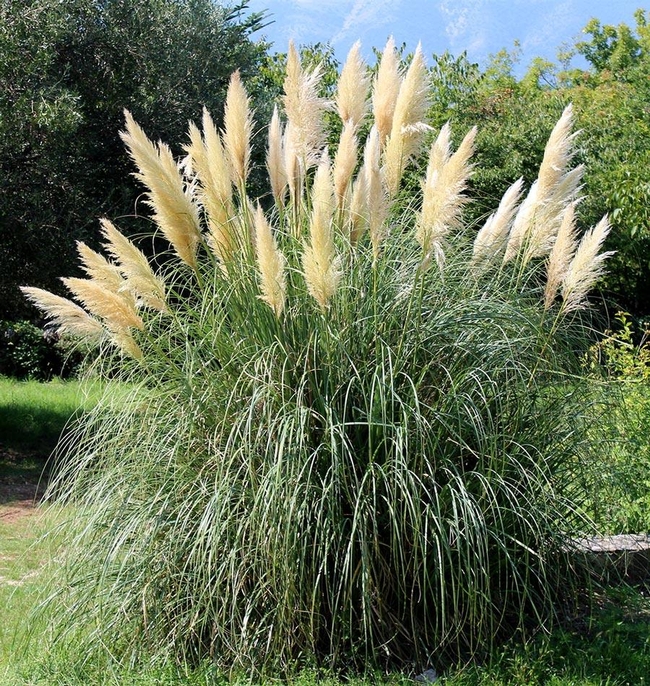
Pampas grass--invasive plant in California. (westcoastseeds.com)
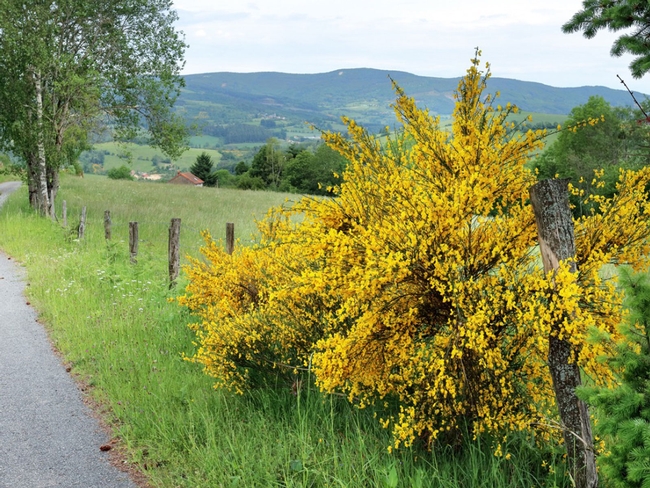
Scotch broom--invasive plant in California. (gardeningknowhow.com)
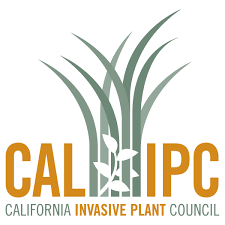
Cal-IPC. https://www.cal-ipc.org/ (wra-ca-com)

Calflora--check website for information on wild California plants. https://www.calflora.org/ (csumb.edu)
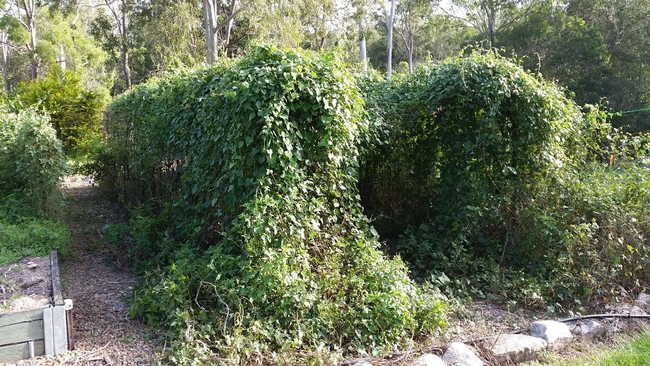
Don't let your garden be invaded by planting invasives. (selfsufficientculture.com)
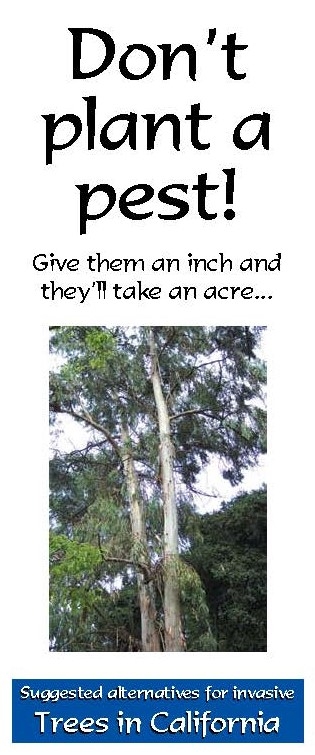
Don't plant a tree pest, either. (cal-ipc.org)